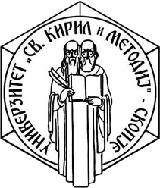- Did you mean
- completion
Резултати од пребарување
Physical design and implementation of IS
Software Engineering
Methodology for designing and implementing software systems through requirement analysis, development and analysis of software design, implementation, integration and software testing; Analysis of a case study for software development; Designing a modular structure of software solution and evaluation of alternatives; Implementation of effective and adequate modules, their integration and testing; Planning and maintenance of software projects.
Operating systems
The student will be presented with the basic building blocks of modern operating systems through their concrete implementation in Windows and UNIX-like systems.
Љупчо Стефанов
Submitted by martina.jankulovska on Mon, 11/09/2020 - 09:53Евита Насевска
Submitted by elena.panovska on Thu, 12/02/2021 - 18:55Моника Матеска
Submitted by martina.jankulovska on Tue, 03/01/2022 - 13:33Fundamentals of computer graphics
Introduction to the theoretical foundations and concepts of 2D and 3D computer graphics, geometric modelling, transformations, rendering, and generating curves and surfaces using splines. Practical implementation using OpenGL libraries, 3D graphical software packages like Autodesk Maya, 3D Max,.. Upon completion of the course the student is expected to demonstrate knowledge of the theoretical foundations and concepts of 2D and 3D computer graphics, proficient use of the OpenGL library and graphic software packages for practical implementation problems of computer graphics.
Robotics
Students will learn about the intelligent robotics. They will be introduced to the basic techniques for modelling environment, the robot-environment interaction, as well as for modelling human - robot interaction. Students will implement probabilistic models of localization and mapping. Students will implement of video and audio systems and their control. Students will be introduced to behavior based robotics and robots that learn from the environment
Visualization
This course should provide students with an introduction to the concept of data visualization, selection of techniques and algorithms for the visualization of different data sets, techniques for mapping data in graphical primitives and their program implementation. Upon completion of the course the student is expected to demonstrate knowledge of the data visualization concept, to know how to choose and implement algorithms for visualizing different data types by programming or by using visualization tools.

